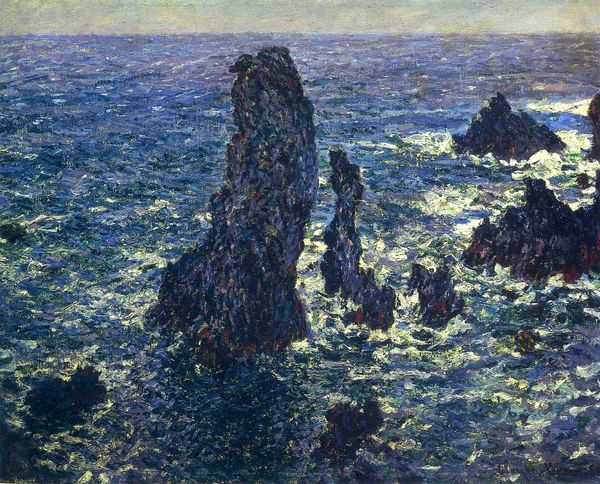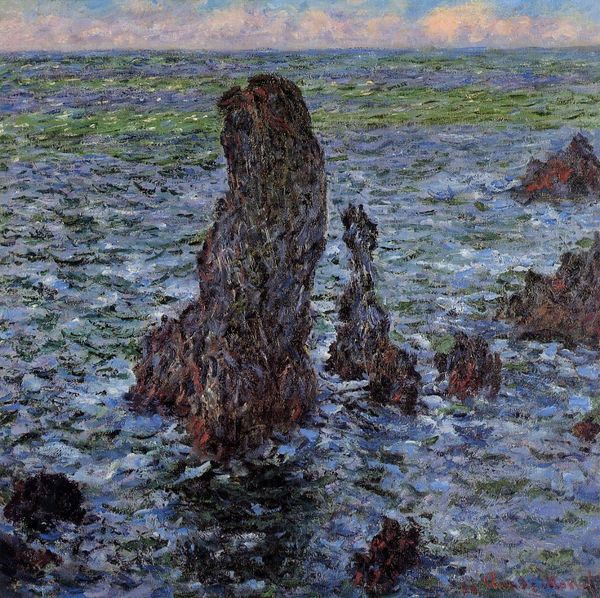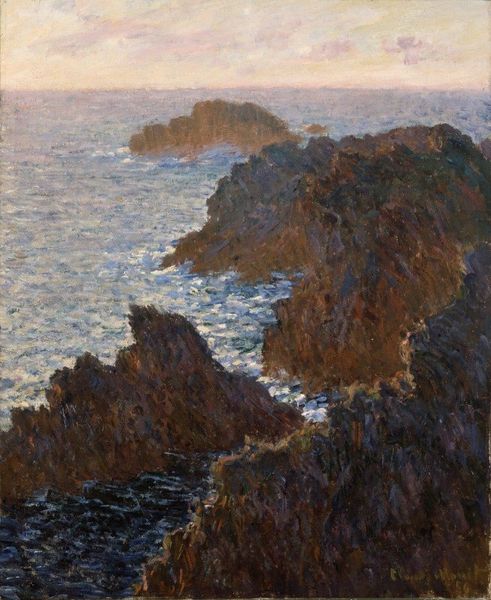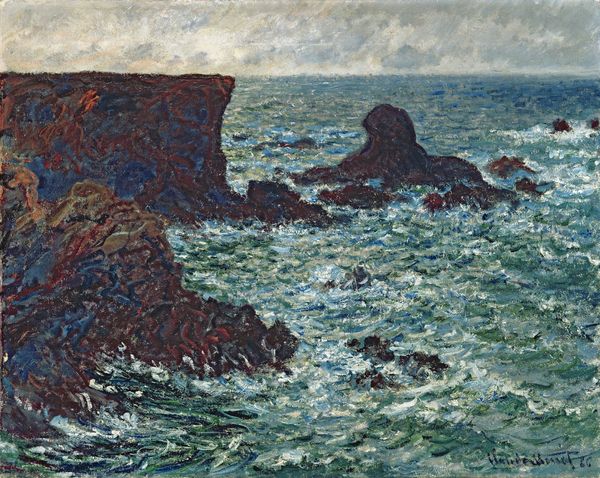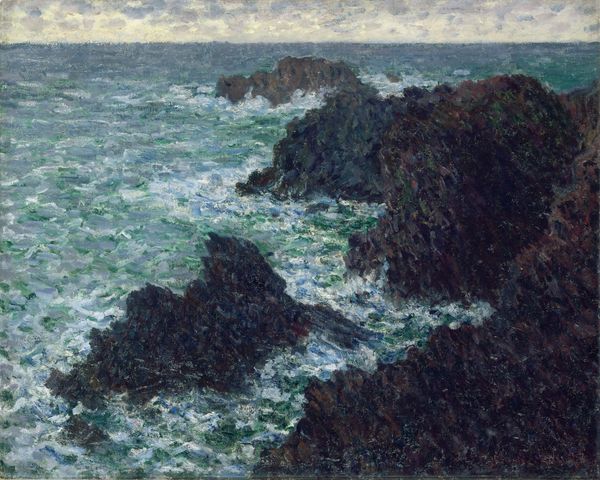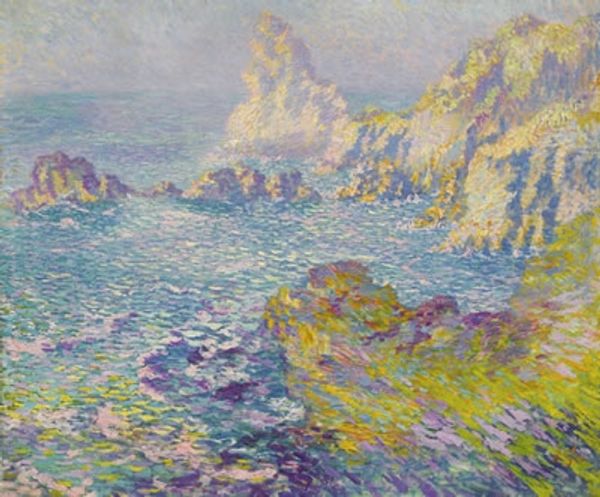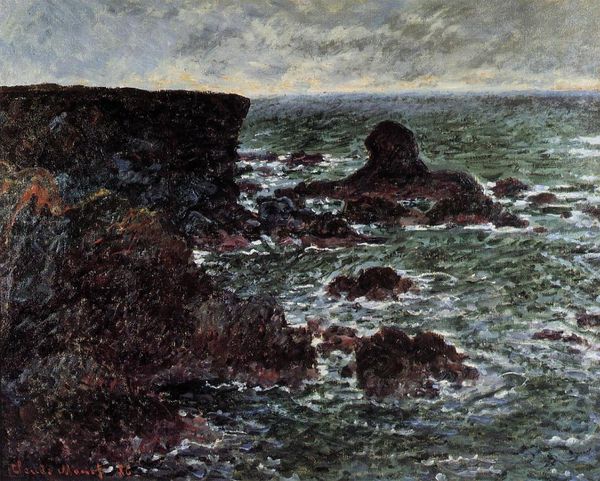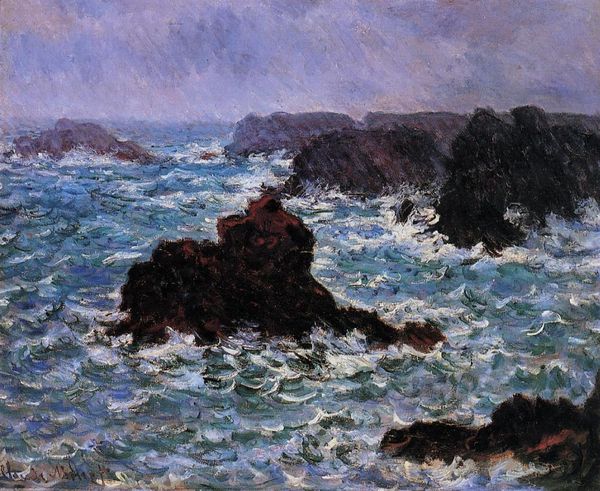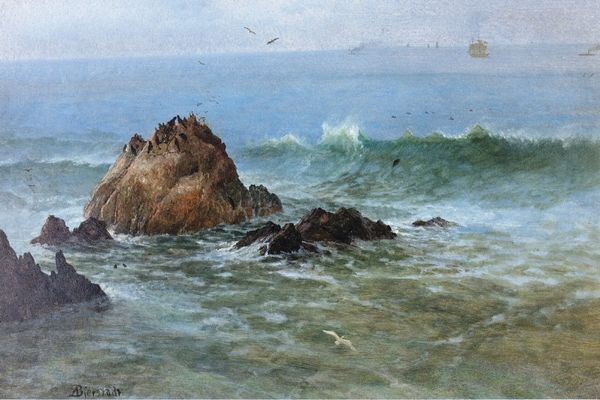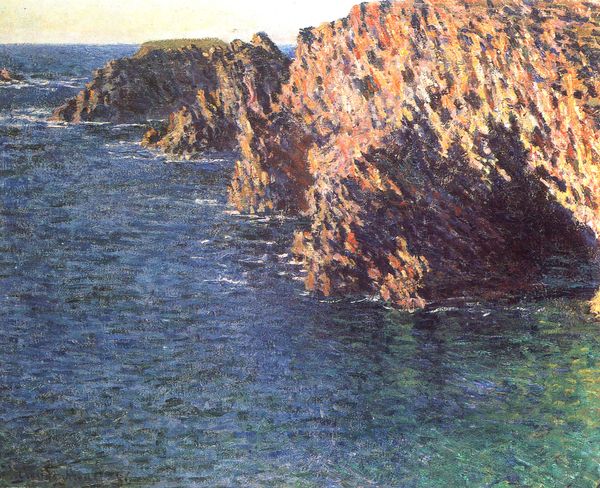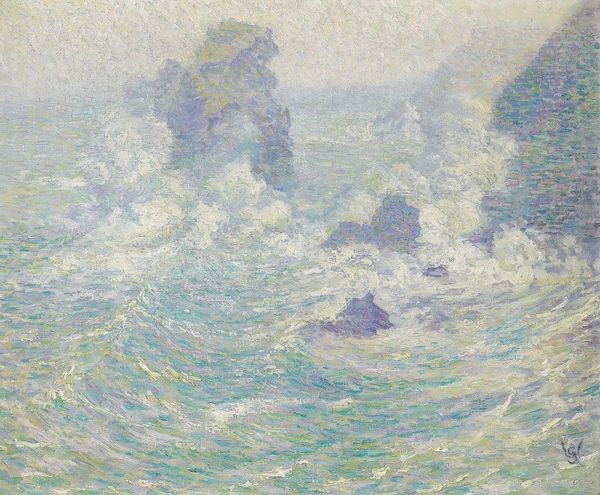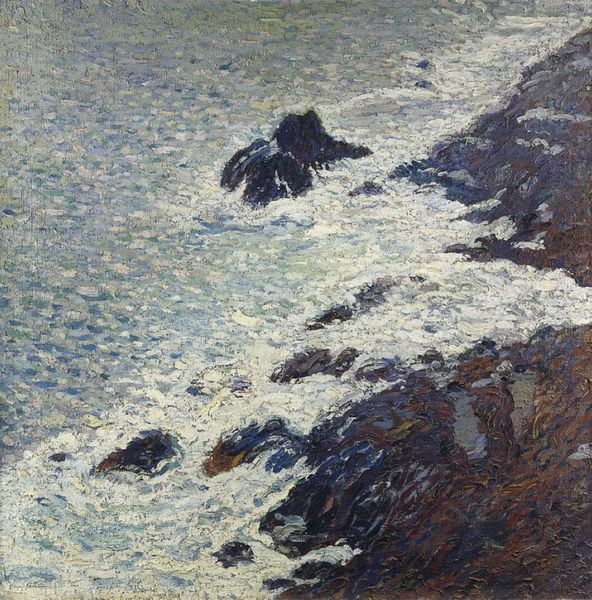
painting, plein-air, oil-paint
#
cliff
#
painting
#
impressionism
#
impressionist painting style
#
plein-air
#
oil-paint
#
landscape
#
impressionist landscape
#
ocean
#
rock
#
seascape
#
water
#
sea
Copyright: Public domain
Curator: Claude Monet painted "The Pyramids of Port Coton, Belle-Ile-en-Mer" in 1886, using oil paint to capture this coastal scene. Editor: My first impression is the incredible dynamism—a turbulent seascape conveyed through broken strokes of color. Curator: Exactly! Monet's Impressionistic technique really shines here. The fragmented brushstrokes aren't merely representational; they are intrinsic to understanding how we visually construct fleeting impressions of natural phenomena. The cliffs are rendered not as solid forms but as agglomerations of light and shadow. Editor: It feels almost brutally honest. Consider the context of its time. The rapid industrialization of France meant the rugged beauty of places like Belle-Île was under threat, commodified through tourism. Is this rendering then an act of preservation, or a commentary? Curator: Perhaps both. The way he juxtaposes warm earth tones within the rock formations with the cool, viridian hues of the water creates visual tension. Notice too, the relatively high horizon line. This pushes the land upwards and emphasizes the volume occupied by these monumental stacks. The light isn't sentimental; it feels bracing. Editor: Monet wasn't just documenting the scene; he was engaging with it politically and artistically. It moves past merely rendering objective reality toward subjective interpretation. The wild ocean almost overtaking the imposing rock formations suggests nature's indomitable power versus the permanence humanity projects onto land. Curator: And look closer. Semiotically speaking, those broken whites amidst the darker water—are they really just wave crests, or also stand-ins for transience? The contrast contributes to the feeling of awe, that romantic sublime where beauty and terror intertwine. Editor: Understanding this artwork allows for an intersectional conversation: Impressionism as more than just an artistic technique but a cultural response, documenting as activism. This artwork urges us to consider how art itself shapes perspectives during times of immense social change. Curator: In short, this artwork serves as more than just an exploration of perception, instead a commentary on temporality and social change itself.
Comments
No comments
Be the first to comment and join the conversation on the ultimate creative platform.
